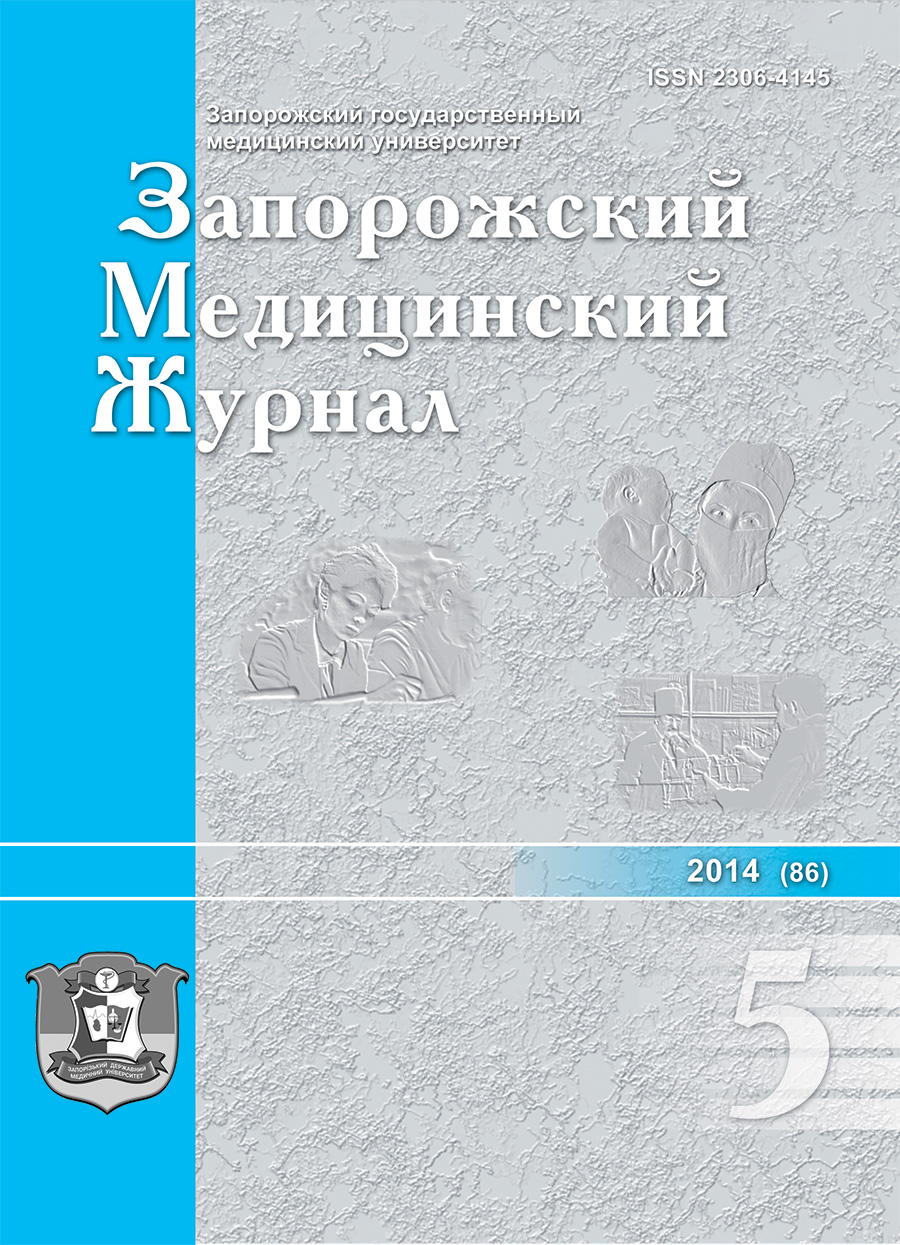The relationship between the level of markers of fibrosis ST2, galectin-3, structural, functional parameters of the left ventricle and renal function in patients with ischemic chronic heart failure
DOI:
https://doi.org/10.14739/2310-1210.2014.5.28742Keywords:
heart failure, biomarkers, renal functionAbstract
Aim. The aim of the study was to investigate the interrelationships between the new markers of fibrosis, inflammation, parameters of structural and functional state of the left ventricle and renal function in 110 patients with chronic ischemic heart failure.
Methods and results. It was found that in patients with chronic ischemic heart failure with reduced ejection fraction compared with the group with preserved ejection fraction higher levels of NT-proBNP, galectin-3, ST2, cystatin C were revealed.
Conclusion. Direct correlation between level of the cystatin C and new fibrosis markers (galectin-3, ST2) was detected. In patients with preserved ejection fraction cystatin C had direct correlation with indicators of structural and functional remodeling of the left ventricle (LAVi, LVEDV, RVPs) and reverse with renal function.
References
Nichols, M., Townsend, N., Scarborough, P., & Rayner, M. (2014). Cardiovascular disease in Europe 2014: epidemiological update. European Heart Journal, 299. doi:10.1093/eurheartj/ehu299.
Dzyak, G. V., Kaplan, P. A. (2012). Kardiorenal'nyj sindrom: patofiziologiya, verifikaciya, podkhody k lecheniiu [Cardiorenal syndrome: pathophysiology, verification, treatment approaches]. Pochki, 1, 9–18. [in Ukrainian].
Vizir, V. A., Popov, V. V., Kopitsa, N. P., & Voloshina, I. N. (2011). Bіomarkey pry sertsevіi nedostatnostі – novі orіientyry lіkuvalnoi taktyky? [Biomarkers in heart failure – new treatment strategy guidelines?]. Sertse i sudyny, 2, 108–113. [in Ukrainian].
Berezin, A. E., & Samura, T. A. (2013). Galektin-3 kak fenotipicheskij indikator kardiovaskulyarnogo riska u patsiyentov s serdechnoy nedostatochnostyu [Galectin-3 as a phenotypic indicator of cardiovascular risk in patients with heart failure]. Zaporozhskij medicinskij zhurnal, 6, 58–62. [in Ukrainian].
Henry-Okafor, Q., Collins, S., Jenkins, C., Miller, K., Maron, D., & Naftilan, A., et al. (2012). Soluble ST2 as a Diagnostic and Prognostic Marker for Acute Heart Failure Syndromes. The Open Biomarkers Journal, 5, 1–8. doi: 10.2174/1875318301205010001.
Syvolap, V. V., Tumanska, N. V., Popovych, A. O., & Polischuk, L. M. (2012). Rіven tsystatynu C ta NT-pro-BNP u khvorykh na khronіchnu sertsevu nedostatnіst zalezhno vіd vnutrіshnomіokardіalnoho napruzhennia lіvoho shlunochka [Dependence of Cystatin C and NT-pro-BNP levels on intramyocardial tension of the left ventricle in patients with chronic heart failure]. Patolohia, 3(26), 68–70 [in Ukrainian].
Voronkov, L. G., Amosova, K. M., Bagrii, A. E., Dziak, G. V., Diadyk, O. I., Zharinov, O. Y., et al. (2012) Rekomendatsii z diahnostyky ta likuvannia khronichnoi sertsevoi nedostatnosti [Guidelines for the diagnosis and treatment of chronic heart failure]. Sertseva nedostatnist, 3, 60–96 [in Ukrainian].
Eknoyan, G., Levin, N., et al. (2002). K/DOQI clinical practice guidelines for chronic kidney disease: evaluation, classification, and stratification. Am J Kidney Dis, 39(1), 1–266.
Ky, B., French, B., McCloskey, K., Rame, J., McIntosh, E., & Shahi, P. et al. (2011). High-sensitivity ST2 for prediction of adverse outcomes in chronic heart failure. Circulation: Heart Failure, 4(2), 180–187. doi: 10.1161/CIRCHEARTFAILURE.110.958223.
Weir, R. P., Miller, A. M., Murphy, G. J., et al. (2010). Serum Soluble ST2: A Potential Novel Mediator in Left Ventricular and Infarct Remodeling After Acute Myocardial Infarction. Journal Of The American College Of Cardiology, 55(3), 243–250. doi: 10.1016/j.jacc.2009.08.047.
Pascual-Figal, D., Ordonez-Llanos, J., Tornel, P., Vazquez, R., Puig, T., & Valdes, M., et al. (2009). Soluble ST2 for predicting sudden cardiac death in patients with chronic heart failure and left ventricular systolic dysfunction. Journal Of The American College Of Cardiology, 54(23), 2174–2179. doi: 10.1016/j.jacc.2009.07.041.
Downloads
How to Cite
Issue
Section
License
Authors who publish with this journal agree to the following terms:
Authors retain copyright and grant the journal right of first publication with the work simultaneously licensed under a Creative Commons Attribution License that allows others to share the work with an acknowledgement of the work's authorship and initial publication in this journal. 

